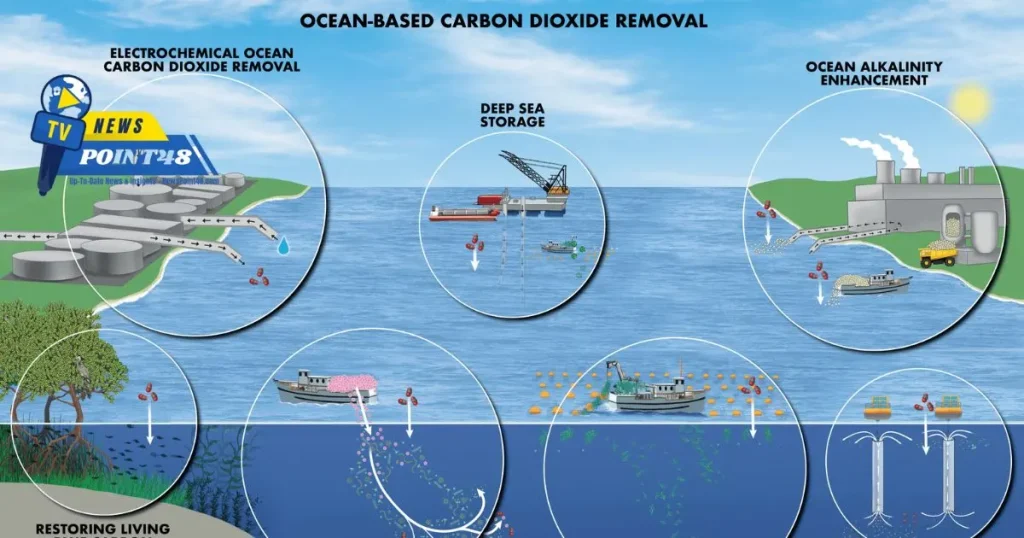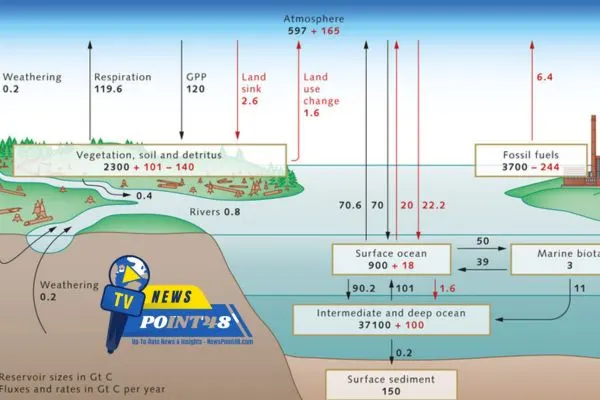
With climate warming, the world’s oceans, which were once thought of as the most dependable natural absorbers of CO2, are losing that function. Recent studies show that upper ocean water masses, responsible for CO2 absorption and storage, are decreasing due to global warming. This shrinkage represents a severe problem in the global carbon cycle and can result in greater levels of CO2 in the air more rapidly than previously which will worsen the current conditions.
History
Oceans are known to assist in balancing the climate system by absorbing and storing greenhouse gasses such as CO2, CH4, and N2O. CO2 that is absorbed by the water in the upper ocean water masses which are in the upper layers of the oceans is the warm and buoyant water layer that is made up of a SHELF CO2 CONCENTRATION which attempts to derogate from the planet. After this deepening, the carbon dioxide remains sequestered for hundreds of years. Such accretive greenhouse gas emission has undoubtedly aided in alleviating the impacts of anthropogenic CO2 on the atmosphere and has thus caused present-day global warming to occur at a more gradual rate than would have been the case.
Nonetheless, scientists today have released indications that this status quo is changing due to climate change. With climate change comes rising temperatures, and with rising temperatures is the shrinking of the upper ocean water, making the ocean less effective in soaking up CO2. This results in a vicious cycle whereby, with each rise in atmospheric CO2 level, which enhances the warming process, the ability of the processes to remove CO2 is diminished.
The Effects of Global Warming on the Upper Layers of the Oceans.
Desiccation of the upper ocean water avionics is associated with climate change in three areas:

Ocean Warming:As the trends evolve in temperature in the ocean-surface marine environment, the warmer water masses induce warming of the upper layers of the ocean and a decrease in the density of the water column, weakening axial convection. This brings about limited convection of warmer water in the middle layers of the ocean, thus, limiting the outward diffusion of CO2 gas absorbed through from oceans’ surface waters.
Stratification:The warming also predisposes to a greater degree of ocean stratification than before, that is the layers of water become more and more separated to the extent that they mix even less than before. Thus, this hampers the return of excess CO2 from the atmosphere into the deeper parts of the ocean.
Reduced Salinity:Climate changes also increase the freshwater component due to the melting of ice and the rainfall which causes the top layer of the ocean surface to have lower salinity, further reducing its capacity to retain and transport CO2.
Such transformations are accentuated especially in the Northern Atlantic Ocean and the Southern Ocean, which are critical regions for the absorption of carbon by the oceans.
Impact on the Global Carbon Cycle
The shrinkage of the upper ocean water masses then presents major issues to the world’s carbon cycle. For the moment, the oceans absorb close to a quarter of the CO2 produced by human activities, but when carbon sequestration capacity decreases, more CO2 lurks in the atmosphere. That is leading up to the greenhouse effect, which will, in turn, bring about quicker increases in temperature, ice melt, and sea level rise.
According to sea surface warming and the consequent stratification of waters have been the principal factors adding the warming in the slightest degree that can alter the efficacy of the ocean carbon cycles – their diminishment as a CO2 sink. If the oceans fail to contain the carbon at this rate, the consequences of the melt may be at higher degrees than the currently presumed temperature restraints.
Consequences for Climate Predictions
Again, the fact that the ocean will be less of an efficient sink of CO2 could mean many negative consequences regarding climate change models and predictions.

Increased Rate of Carbon Dioxide Increase in the Atmosphere: As the oceans store less CO2, this overhead air could have more CO2 and thus result in faster global temperatures.
Heat Waves and Drought Storms: Since the oceans hold less CO2, the warming effect on the landscape and ocean will be much more pronounced, changing climate and making water less common relative to land temperatures.
Sea Level Rise Feedback: This high CO2 atmospheric level will probably produce an ice melt feedback loop which will provide even faster sea-level rise and jeopardize coastline dwellers across the globe.
Mitigating the Effects
It is necessary to deal with the reduction of the upper layers of the ocean and the achievement of CO2 saturation limits as these problems are predisposed to bring about negative effects. The following provisions are particularly important in this regard:
Reduction of Carbon Emissions: To bring down the rate of warming in the oceans, it is critically important that a considerable reduction in global emissions of greenhouse gases is effected. Such measures as the use of renewable energy, greater energy efficiency, and conservation of carbon sinks like forests are inevitable.
Ocean Conservation:Taking practical action to protect and restore marine environments including seagrass meadows and mangroves as well as enhancing the carbon forcings should be undertaken.
Scientific Monitoring: More precise ocean and climate status follow-up will lead to improvements in climate models and predictions made.
The report’s main contributions and the conclusions.
The stratum changes of the upper layers of oceanic waters give a visual and effective understanding of how there are effects on the globe and how the existing climate changes can infiltrate normal activities. With less effective oceans attempting to work at debugging GHGs, the fear of quick rising fat red line increases levels. It is essential to comprehend the mentioned changes to enhance climate models, efficiently prepare for the emerging impacts respond promptly, and make sure that more damage is not done.
Newspoint48 is the best place to get climate updates and the latest environmental news.
